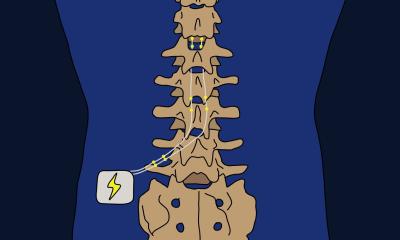Source: Pexels/NastyaSensei Sens
News • More than a symptom
Chronic pain: a real disease after all?
For the first time ever, chronic pain will be classified as a diagnosis in line with other diseases when the World Health Organization (WHO) approves the next catalogue of recognised diseases in May.
According to Professor Peter Svensson from the Department of Dentistry and Oral Health, this is very significant for the approx. 20% of the population who suffer from chronic pain. Working with top researchers from all over the world, he has helped to define the new diagnoses. His research field is orofacial pain. “You can’t measure chronic pain. So therefore, it hasn’t previously been classified as a disease, but instead as a symptom of a disease. This is now being altered and this is important for patients and the healthcare system," says Peter Svensson.
Work on the new classifications has been going on for more than a decade, and the new pain diagnoses were recently published in the scientific journal PAIN. Peter Svensson has contributed to the section of the disease catalogue dealing with pain in the face and mouth (orofacial pain), which a quarter of the population suffer from. "Facial pain can severely impact quality of life. More precise diagnoses mean that treatment can be more targeted, because you’re not simply viewing the pain as a symptom. Now it will be firmly established throughout the healthcare system that other forms of treatment are needed when it comes to chronic pain."
This is important for patients who can in future expect better and more targeted treatment
Nanna Brix Finnerup
The new disease catalogue will also have considerable importance for research, says Professor Nanna Brix Finnerup from the Department of Clinical Medicine and the Danish Pain Research Center. She conducts research into neuropathic pain. "Today, almost all chronic pain conditions are placed in a common category. This means it’s not possible to carry out register-based research in, for example, neuropathic pain following chemotherapy or diabetes. But it will now be possible to do so in the future. This is important for patients who can in future expect better and more targeted treatment,” she says and adds: "The correct treatment requires the correct classification. In future, medical doctors are going to have greater focus on the treatment of neuropathic pain and will prescribe other types of medication than the classic analgesics such as Ibuprofen, which do not work on the nervous system."
Following the meeting in May, the WHO members will begin a comprehensive revision of how they register diseases.
Source: Aarhus University
29.04.2019







